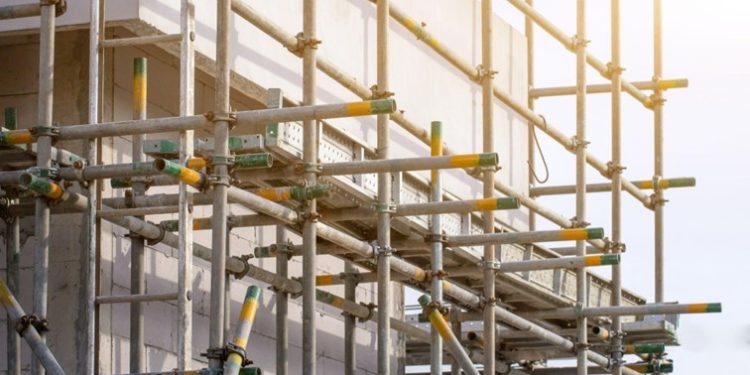Scaffolding refers to an elevated temporary structure used to support workers’ platforms during the construction of a building. It is constructed either from timber poles or steel hollow sections. Its purpose is to provide a safe, stable platform for work on high-rise buildings’ external parts, such as construction, painting, repairs, and maintenance. Scaffolding is designed to support its weight and the imposed loads, which depend on its use. Key components of a complete scaffold include boards, guardrails, toe boards, and more.
One common type of scaffolding material used is hollow steel tubes, available in two thicknesses, 3.2 mm and 4 mm. These tubes are galvanized to protect against weather elements and are joined and secured using coupler clamps to form a strong monolithic structure. Scaffolding is also braced laterally using façade and ledger bracing. There are two main types of scaffolding: freestanding scaffolds and tied scaffolds. Freestanding scaffolds do not require support from adjacent structures, while tied scaffolds are attached to an adjacent structure.
In addition to these, specialized scaffolding types, such as suspended scaffolds and cantilever scaffolds, are used depending on specific project needs. Suspended scaffolds, for instance, are platforms suspended by ropes or chains and can be raised or lowered as needed, making them ideal for tasks like window cleaning or facade repairs. Cantilever scaffolds, on the other hand, are supported by a series of needles through holes in the wall and are useful when ground space is limited.
Workmanship and inspection are crucial for the erection and dismantling of scaffolding to ensure the safety of the workers. Scaffolding must be regularly inspected for stability, proper assembly, and any signs of wear and tear. In most cases, safety nets are attached to the scaffolding to protect people from injury by limiting the distance they fall.
The correct use of scaffolding not only ensures the safety of workers but also contributes to the efficiency and quality of construction projects. Proper training for scaffolders and adherence to safety regulations are essential to prevent accidents and injuries on construction sites
















